Affiliate disclosure: This post may contain affiliate links. Please see our Privacy Policy.
Chickens that lay colorful eggs can turn a small backyard hobby operation into a place of wonder.
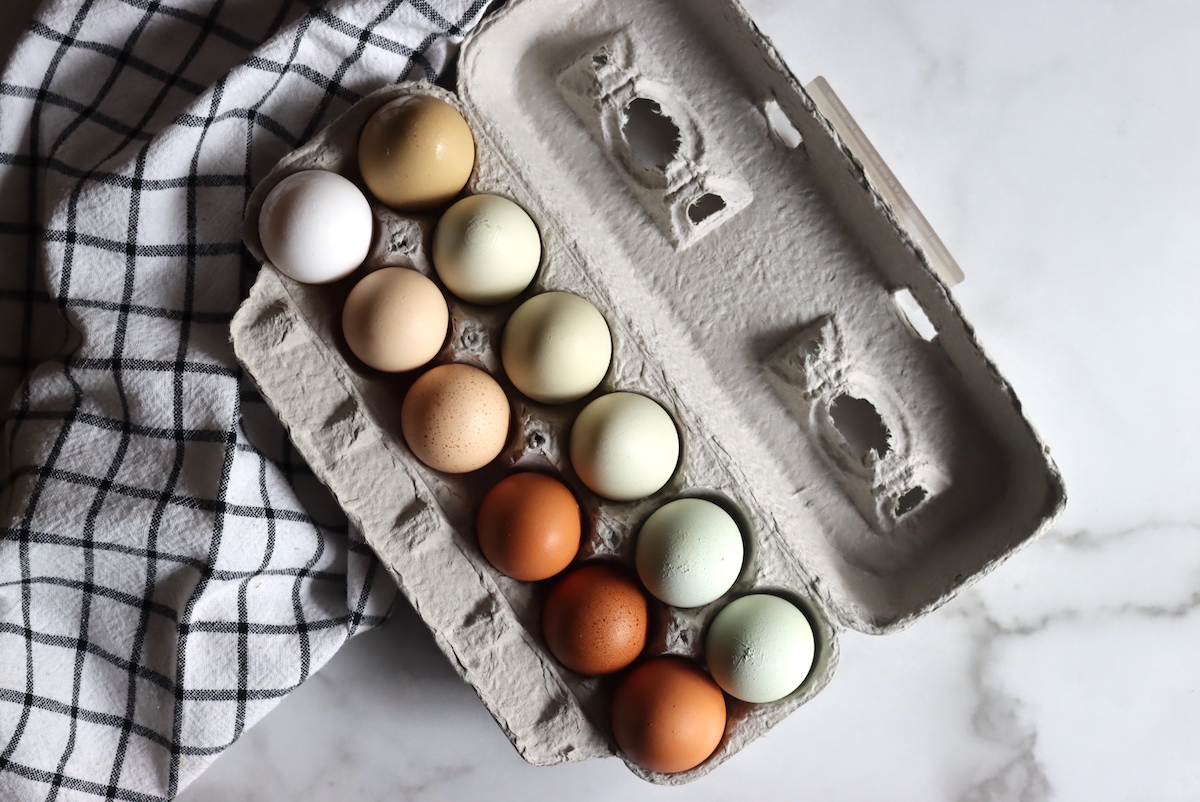
My daughter absolutely loves chickens, and she’ll spend hours tending them, petting them and even training them to do tricks. In the past, we’ve always raised all the common, docile backyard homestead breeds, many of which lay lovely brown eggs.
This past year she noticed a table at the farmer’s market where a vendor was selling cartons of rainbow eggs, with every color imaginable. Green, blue, pink, speckled…even a dark brown egg do dark it looked like a chocolate Easter egg.
My little chicken loving baby started dancing with excitement, and asked if we could expand our flock so that our egg cartons would be just as colorful.
I never could say no to a 7 year old that just wants to spend the days petting her chickens, so I quickly found myself researching which chicken breeds lay colorful eggs. Within a few weeks, we added 30 chickens to our flock, including:
- Marans (dark brown eggs)
- Orpingtons (light brown to pink eggs)
- Ameraucana (blue eggs)
- Bielefelders (brown eggs, but they cross breed with Ameraucana chickens to make green “olive egger” chickens in the next generation)
- Leghorns (white eggs)
Before long, our egg baskets were full of a rainbow of egg colors!
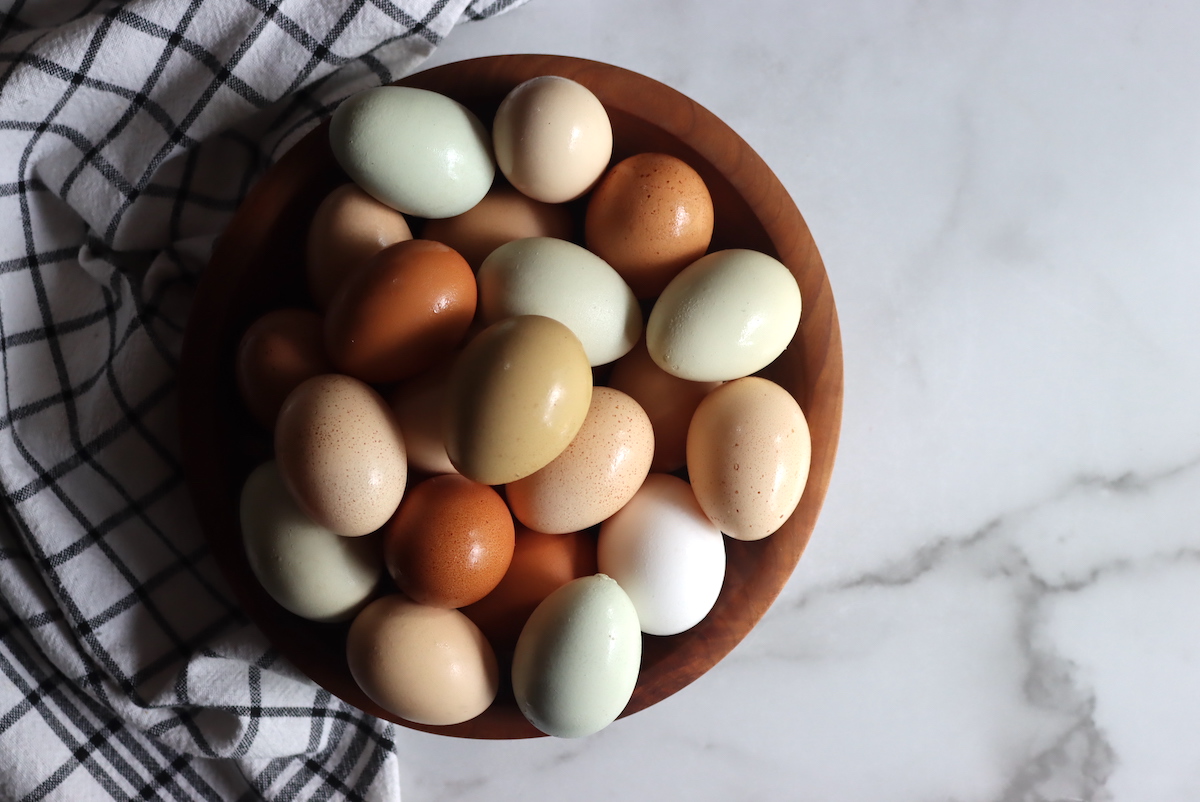
How Are Chicken Egg Colors Formed?
In order to understand how chicken egg colors are formed, it’s helpful to have a quick primer on how eggs are made and how they travel through a hen’s reproductive system. Once you have a basic understanding of the process, a whole world of color possibilities opens up!
To begin with, it takes approximately 24 to 26 hours for an egg to go from the ovary to being laid. All hens have one ovary and one oviduct. The yolk is formed in the hen’s ovary when ovulation occurs. At this early stage, the yolk is called an oocyte. Once the oocyte is formed, it is released into the oviduct, where it will develop into a complete egg with a shell.
As the egg moves through the oviduct, which is a tubular part of a hen’s anatomy and is over two feet long, it develops all of the necessary characteristics needed to form an egg in a shell. If the egg ends up being fertilized by a rooster, the fertilization will occur while the egg is moving through the oviduct. The actual egg shell, including its color, is formed towards the end of the egg’s journey through the oviduct.
Egg shells are primarily made of calcium carbonate, a mineral that is naturally white. You may have noticed that brown eggs, for example, are brown on the outside and white on the inside. You’ll see this difference in color with hens that lay brown-pigmented eggs. The brown pigment coating is added to the egg in the last 90 minutes of its journey through the hen’s oviduct.
Blue egg shells are unique in that they are blue through-and-through. This vibrant color is achieved by breeding hens that produce a pigment called oocyanin, which is actually a by-product of bile. When these blue-egg-laying chickens are cross-bred with brown egg-laying breeds, the egg shell color can turn various shades of green (there is one breed of hen which can produce green eggs on their own, but more on that further down).
Egg shells can also be speckled or striped, which has to do with how the egg moves through the oviduct. I’m also going to be covering these, so keep reading to learn all about the specifics of how to get your hens to produce eggs in different shades of cream, brown, blue, and green.
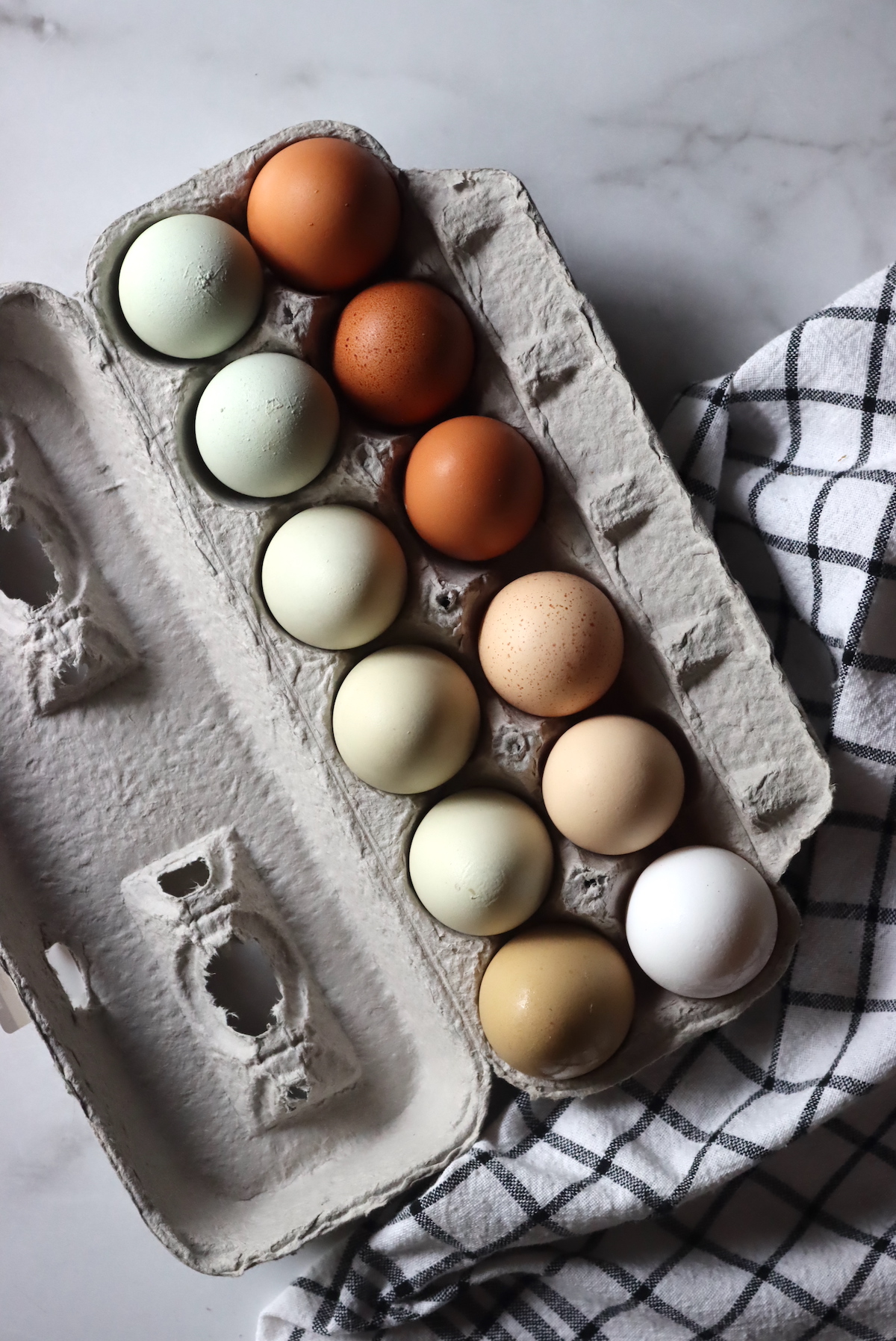
Chickens That Lay Blue Eggs
There are three breeds of hen that will naturally produce blue chicken eggs. As mentioned above, these eggs are blue through-and-through.
These hens tend to be excellent producers of eggs, laying an impressive yield of blue chicken eggs throughout the year.
Hens that lay blue eggs often have distinctive little personalities to match the unique coloring of their eggs.
Chicken breeds that lay blue eggs include: Ameraucana, Araucana and Cream Legbars.
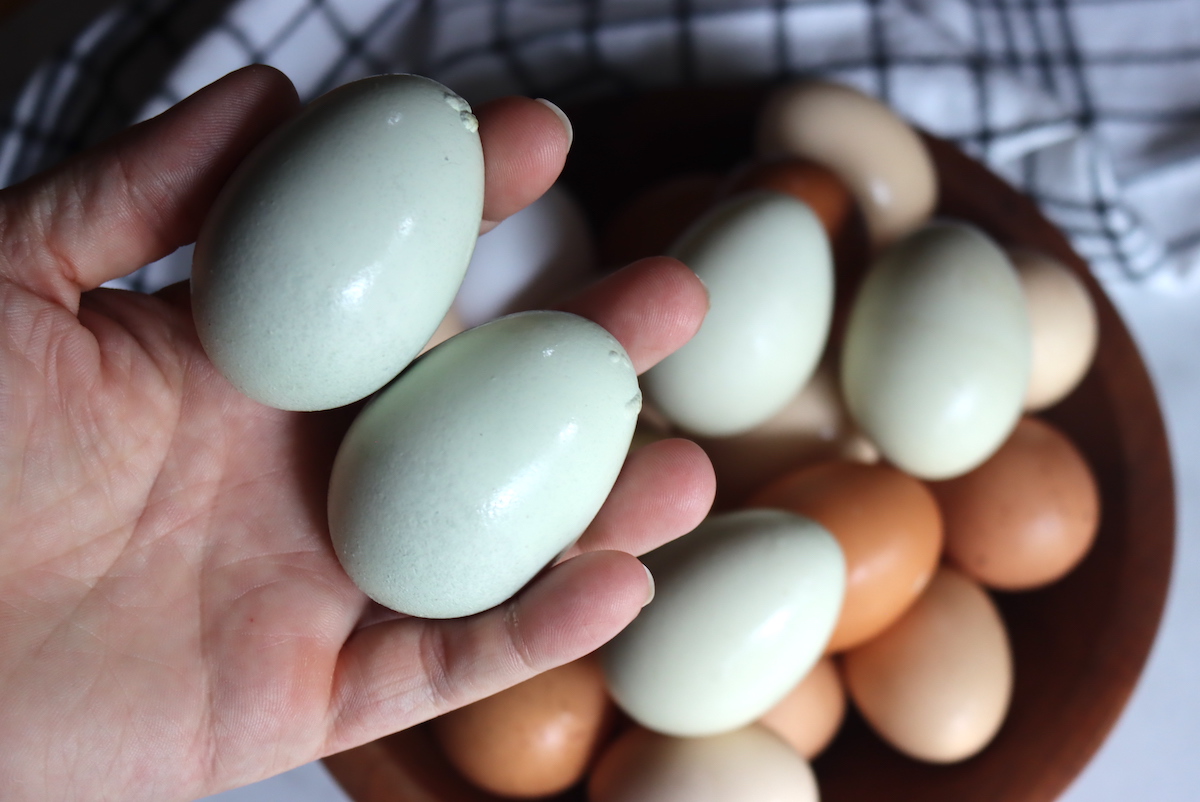
Ameraucana
This lively blue egg-laying breed evolved from chickens belonging to the indigenous Mapuche people in what is now Chile in South America. The Ameraucana chickens that are familiar to us today are the result of eclectic crossbreeding and will produce roughly 150 medium-sized pale pastel eggs over the course of a year.
In terms of physical characteristics, Ameraucana chickens are a fairly light bird with red ear lobes and slate blue legs. Hens are highly fertile and excellent foragers; these birds do particularly well in free-range environments.
Ameraucana hens are prized for their hardiness in both cold and hot temperatures.
Araucana
Another layer of medium-sized blue eggs, this breed of chicken also originates from Chile. Araucana chickens have a particularly endearing appearance; not only are they rumpless, they have fantastic little ear tufts that look as though they’ve been parted down the middle.
A low maintenance breed, you can expect araucana hens to lay about 200 eggs per year. Araucana are sociable, active birds that are friendly towards other people as well as fellow fowl.
These birds mature quickly and will need a large coop and plenty of space to thrive.
Cream Legbar
Known for their unique personality as much as for their pastel blue eggs, this breed of chicken is recognizable by its cream feathers with gray barring.
A medium-sized bird, hens appear smaller than their actual size due to compact feathers that lay tightly across the body. In terms of personality, Cream Legbars independent, curious, and quirky; they get along well with other hens while being self-sufficient foragers.
In terms of egg production, these hens are active layers, producing about 200 eggs per year.
Cream Legbars need space during the warmer months but do well in more confined quarters during the winter which, due to their lighter bodyweight, helps protect them from the cold.
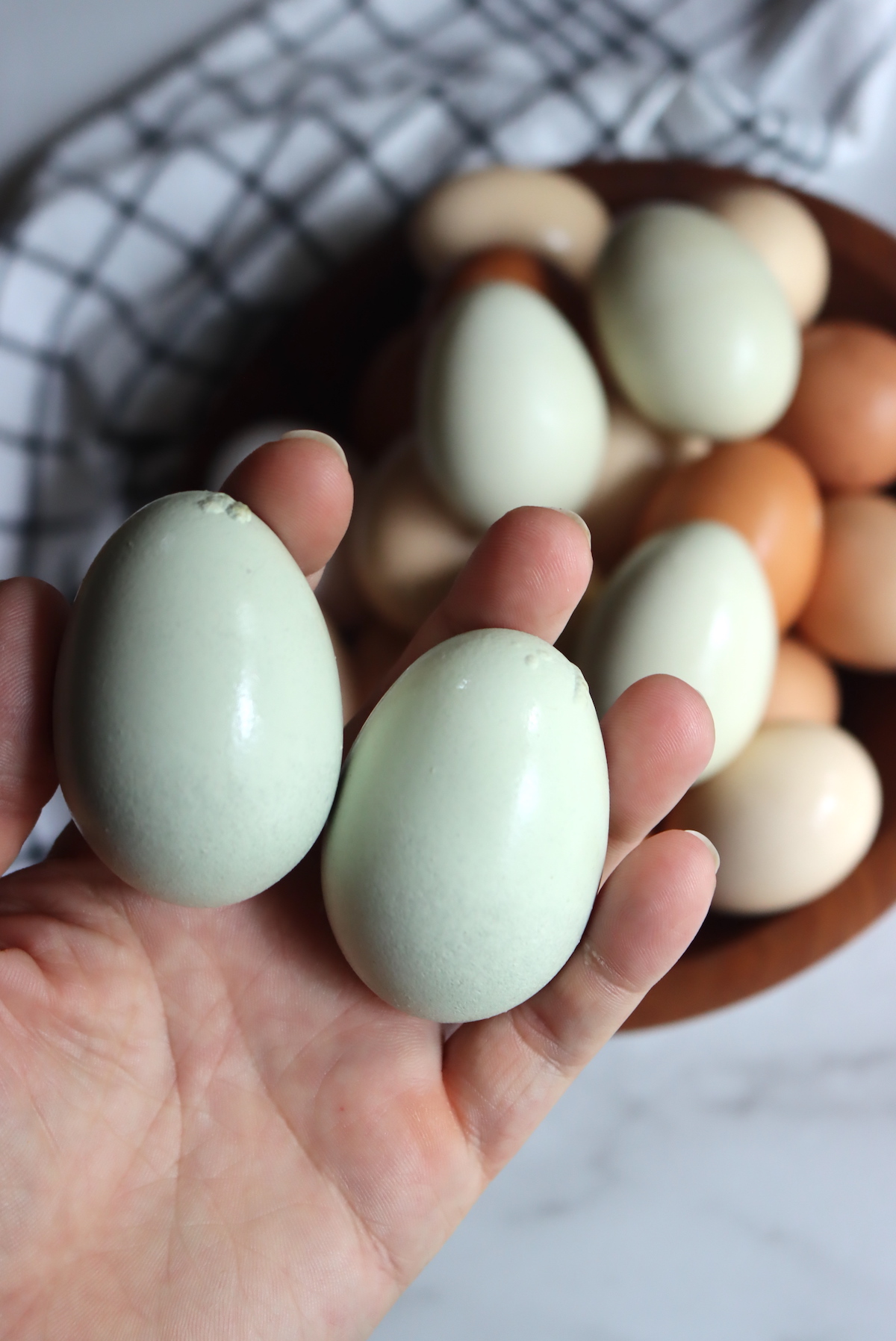
Chickens that Lay Green Eggs
There’s only one breed of chicken that will lay green eggs naturally, without the use of crossbreeding to achieve the effect. This is the Isbar chicken, which produces a light green egg.
Other than this exception, eggs that come in varying shades of green are possible when two parent chickens are bred with this color goal in mind. Read on to learn all about how these shades of green are possible when the correct breeding practices are put into effect.
Chickens that lay green eggs include: Isbar and Olive Eggers (a crossbreed rather than a true breed).
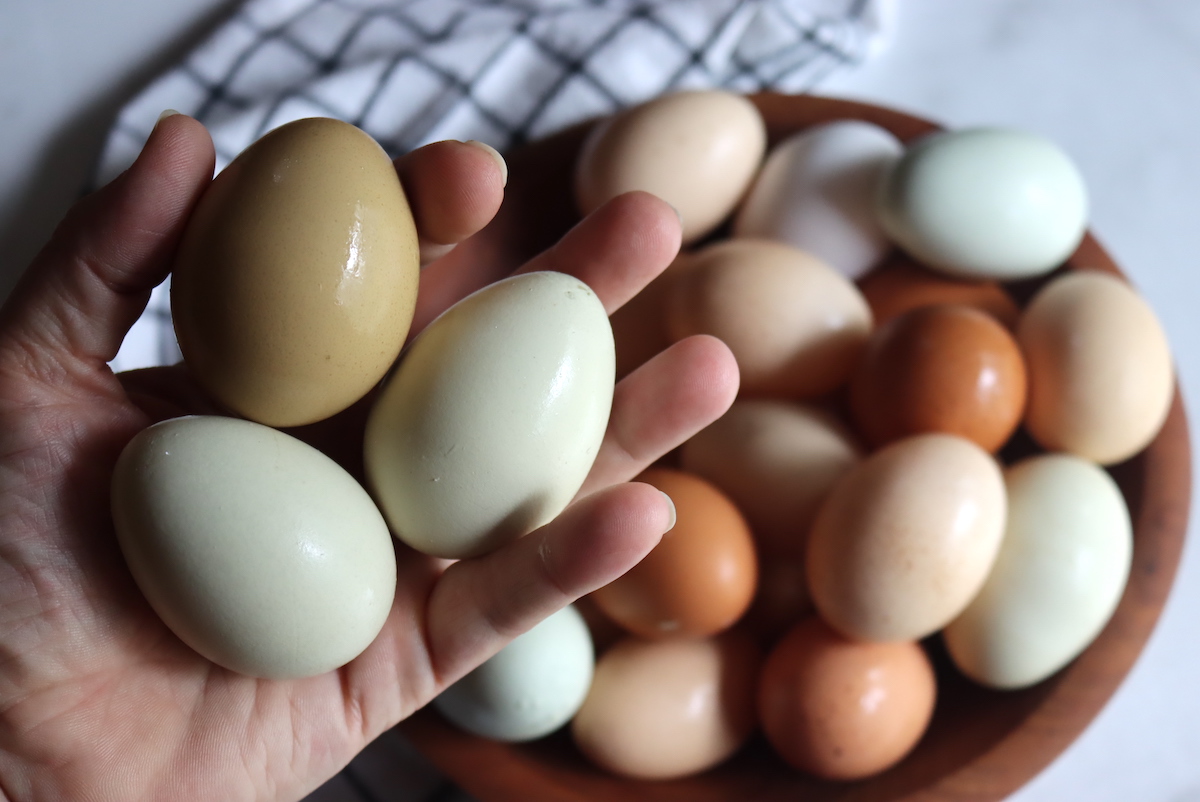
Isbar
Known for their gorgeous moss green-colored medium-sized eggs, these chickens orginate from Sweden where they were first bred in the 1980s. With Isbar hens, you can expect to collect 5 eggs per week or 200 to 230 eggs per year—these birds are known for being great layers.
Isbar chickens are super-friendly and can even make good pets. They love to forage and are fairly self-sufficient if left to look for food on their own in a small homesteading space or backyard.
Olive Eggers
Not a technical breed but a combination of two breeds, Olive Eggers are a result of breeding an Ameraucana hen with a Marans rooster. These smallish, friendly hens will lay 150 to 200 large dark olive green eggs each year.
Olive eggers are both cold and heat hardy, especially when it comes to very low temperatures.
Favaucana
Favaucanas are the result of cross-breeding Faverolle and Ameraucana chickens together, and they’re sometimes refered to under the generic term “olive eggers.”
Favaucana hens will lay 5 sage-colored eggs per week, even during the winter time—they’re a cold-hardy bird, but don’t tolerate the heat and need plenty of ventilation if kept in confinement. Overall, they tend to be friendly and curious creatures.
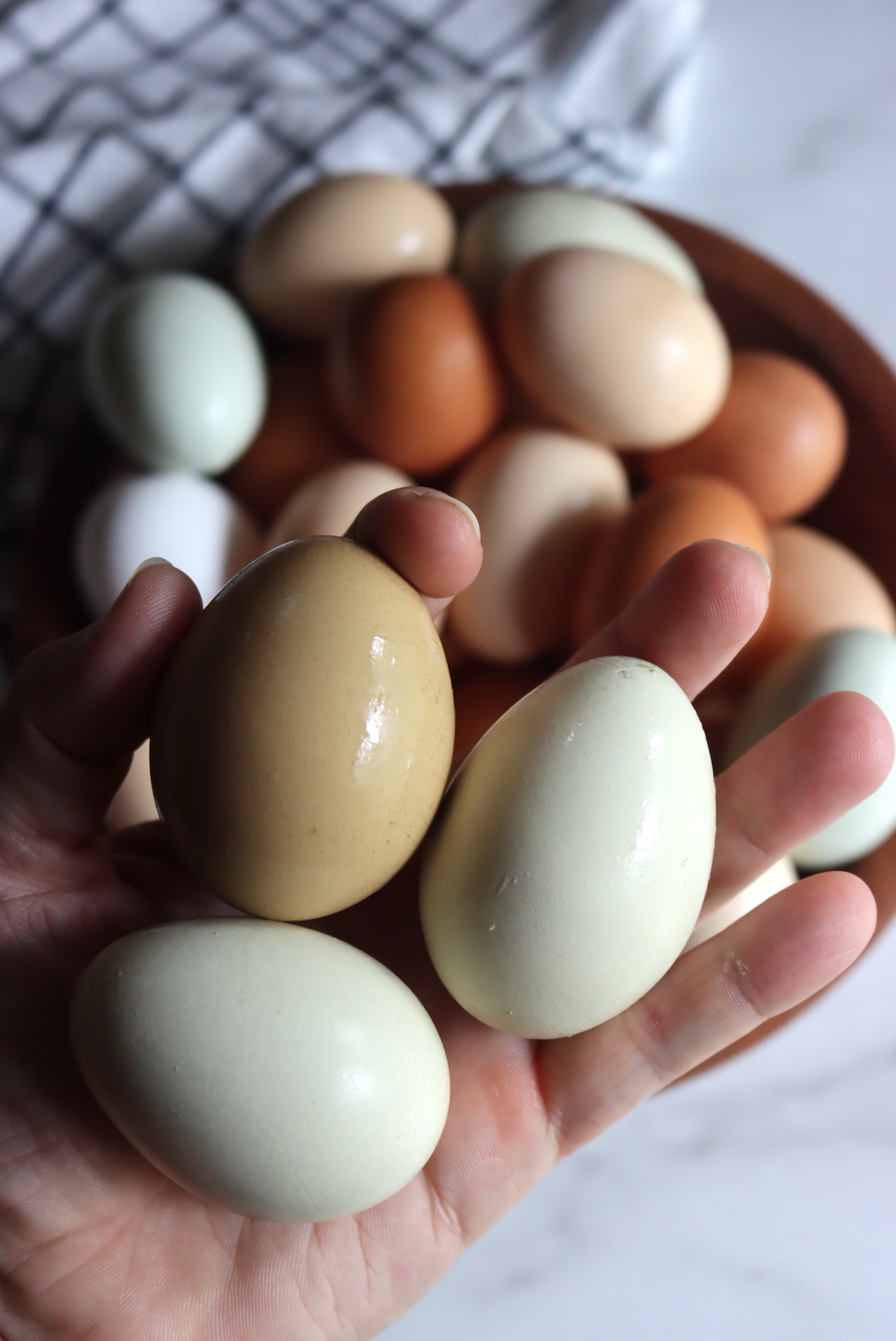
Chickens that Lay Speckled Eggs
While there are no chicken breeds that lay speckled eggs specifically, certain breeds are more prone to eggs with this pleasing effect. Rather than it being a trait belonging to one breed, the speckling pattern actually occurs when a regular egg rotates as it moves through the hen’s oviduct.
Some of the breeds that are most likely to produce speckled eggs are the aforementioned Marans (specifically Cuckoo Marans), Barnevelder, Penedeseneca, any of the Easter Egger breeds, and Welsummers.
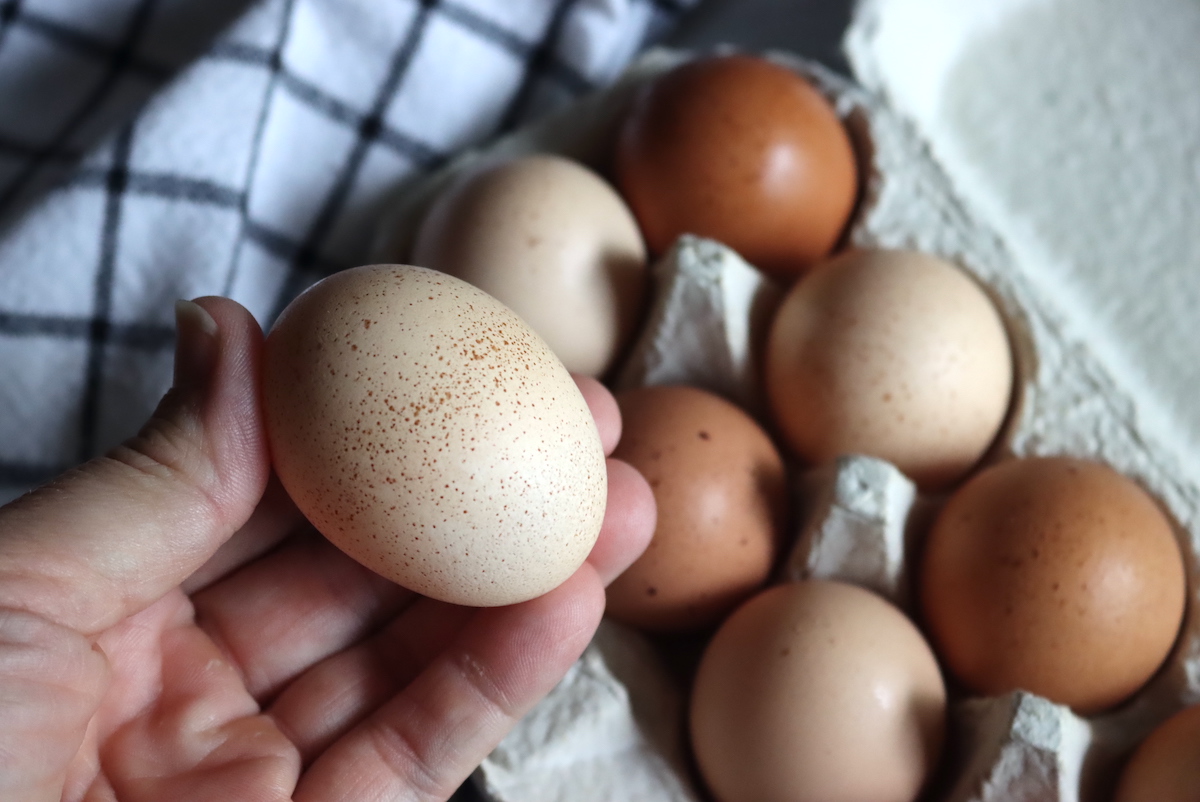
Chickens That Lay Brown Eggs
The breeds listed below will produce beautiful light brown eggs, varying in shade from deep cream to soft tan. If you want to gather brown eggs you’ll have plenty of different breeds to choose from, whether you’re a backyard beginner or an experienced farmsteader.
To help inform your decision, I’ve included the most pertinent points about personality, hardiness, and the number of eggs laid per hen. You’ll find that many of the following breeds are friendly and docile, making them ideal options if you have children who will be helping with the upkeep.
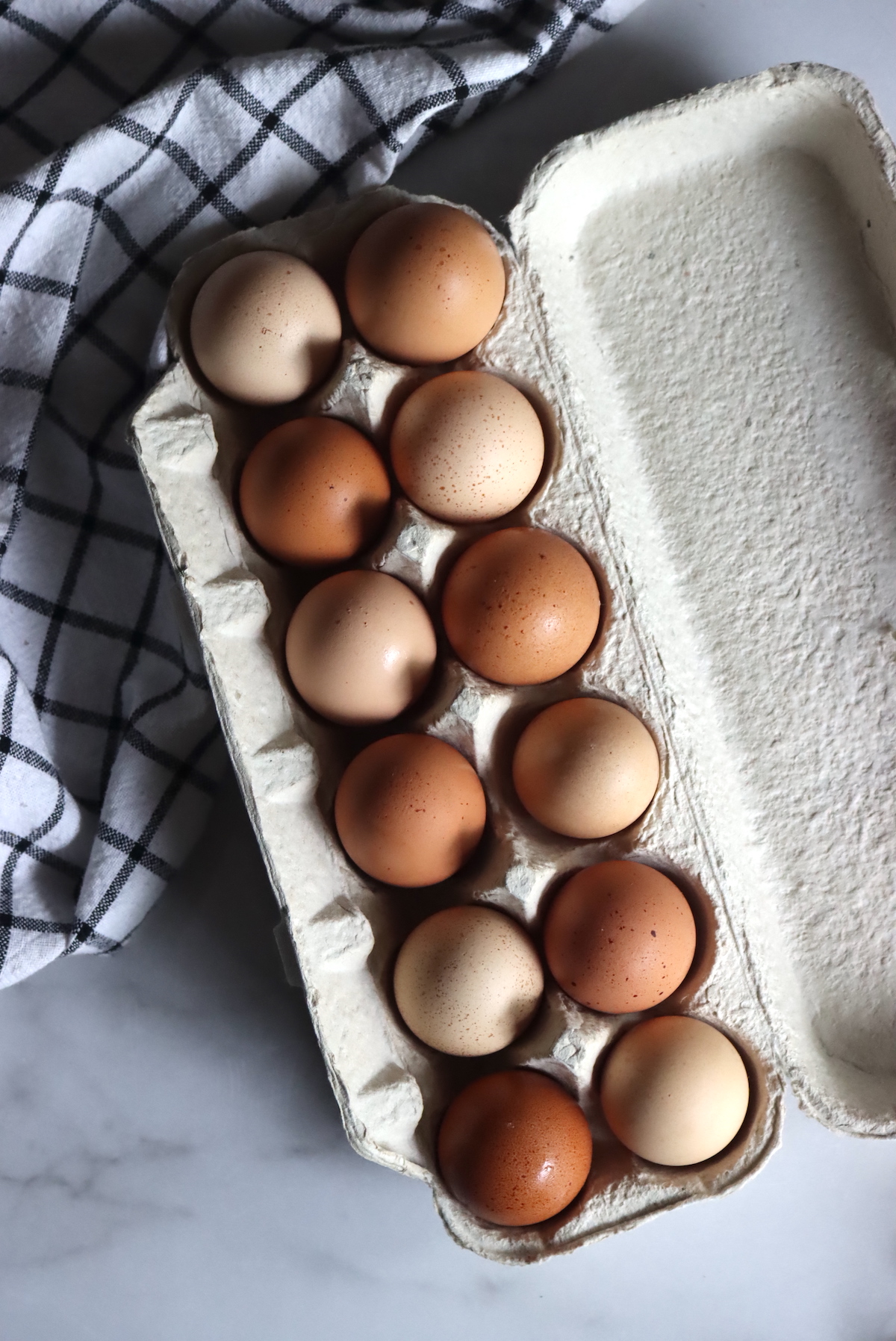
Rhode Island Reds
A relatively new breed of chicken, Rhode Island Reds are actually the state bird of Rhode Island. Developed in Massachusetts about a century ago, these talkative chestnut colored hardy chickens are a great beginner-friendly bird if you’re new to keeping hens.
There are two strains: production and heritage; choose the production strain over the heritage strain if you want the most eggs (about 5 to 6 light brown eggs per week, or 250 to 300 eggs per year).
On average, Rhode Island Red hens weigh between 6 and 7 pounds. Rhode Island Reds are self-sufficient birds that love to forage and roam around free range. For the most part, Rhode Island Red hens are cold-hardy, although prone to frostbite in very low temperatures—they don’t do particularly well in very hot weather, so they’ll need shade and protection during the summer months.
Golden Comets
Golden Comet chickens are a hybrid breed, created by cross-breeding White Rock hens with a New Hampshire rooster. These laid back chickens are quite small, weighing 4 pounds or less, and have white and chesnut-colored feathers.
Golden Comets will thrive in any climate, even very cold winters as long as they’re given straw to roost in to protect their legs and feet from frostbite. These hens are known for their high egg-laying yields, and will produce a light brown egg every day once the bird has reached maturity.
Black Sex Links
Another hybrid breed that lays large light brown eggs, Black Sex Links are the result of cross-breeding Rhode Island Red roosters with Barred Rock Hens. Mature hens have black feathers with a greenish tint, some birds will also have patches of reddish feathers.
Like Golden Comets, these chickens can lay up to 300 eggs per year and are very hardy in both the summer and the winter. Black Sex Links are on the skittish side, but are still friendly. These hens aren’t particularly well-known for being broody but they are excellent foragers.
Bielefelder
A hardy breed of dual purpose chicken, these are one of the friendliest and easiest to raise chickens around.
This breed is often bred to a blue egging breed to produce distinctive “olive egger” chickens that lay green eggs.
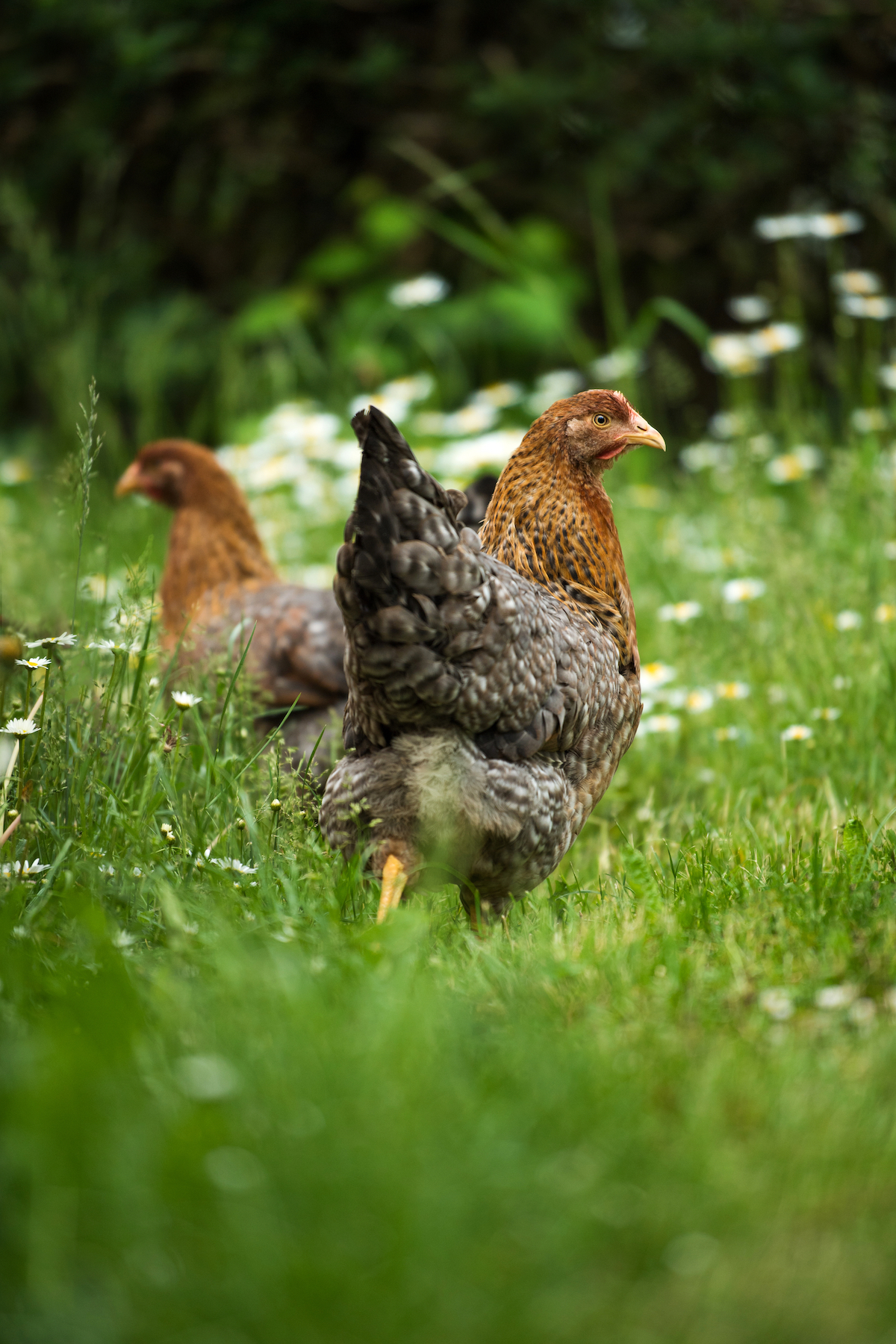
Wyandotte
An American breed of chicken named after an indigenous tribe called the Wendat, these outspoken chickens are one of the most famous breeds in the world. Known for their beautiful appearance, hens have laced feathering and can be one of 17 different official breed colors.
Wyandotte hens will lay about 200 brown, creamy-colored eggs per year, but aren’t exceptionally broody (they are excellent forages and prefer to be free range). A good beginner-friendly hen, these birds are friendly and can withstand cold winters.
Brahma
One of the largest breeds, these gentle hens weight upwards of 8 pounds. If you live in a cooler climate, Brahma hens are for you! These hens prefer laying their eggs, of which you can expect 3 to 4 per week, over the winter.
Because of their size, Brahma chickens eat large amounts of food compared to other birds. Brahma chickens have a unique appearance, with feathers covering the legs and two outer toes—you can find them with either dark, light, or buff-colored plumage.
These chickens love to forage and to have free range; in the summer they must have shade and water at all times.
Jersey Giant
These birds are true to their name, being the largest chicken in the United States. Despite their large size, both the hens and roosters are very gentle, some people even like to have Jersey Giants as pets!
Unfortunately, these birds aren’t fantastic egg layers as they are more likely to accidentally break their own eggs (although if you can get the hens to lay eggs, you’ll be gifted with larger-than-normal creamy brown eggs).
At most, you can expect 2 to 4 eggs per week.
Orpington
Another large member of the chicken family, you can expect Orpington hens to lay 3 to 5 medium-sized light brown eggs per week (or around 150 to 250 per year).
Orpington chickens are quiet birds, making them a good choice if you live in the city or in close quarters with others. These birds love their space, so be prepared to give them 4 feet of coop space (or more) and plenty of outdoor room to range.
Orpington chickens do well in the winter but won’t thrive in very hot temperatures.
Chickens that Lay Dark Brown Eggs
Not to be confused with eggs of the light brown variety, the following breeds produce striking deep chocolate eggs—they could almost be mistaken for a real chocolate Easter basket treat!
In fact, the pigmentation is so intense on these eggs that in some cases it can be wiped off, almost like the eggs have been coated in marker or paint without being left to dry.
These four breeds produce some of the most stunning eggs I’ve ever seen and will make a handsome addition to any egg basket.
Barnevelder
For large striking dark chocolate brown eggs, look no further than Barnevelder hens (also called Barnies), which lay roughly 3 to 4 eggs per week or 150 to 200 eggs per year. Partly due to the color of their eggs, this breed is unfortunately quite rare, although not impossible to find.
Barnevelder hens are quiet, friendly, and will tolerate confinement fairly well, making them a good choice for city dwellers and small spaces. There are several colors to choose from, including gold, silver, and blue double-laced feather patterns, as well as black, white, silver, and blue plumage. Barnevelder hens aren’t particularly broody but will continue to lay eggs over the winter.
Maran
Another type of chocolate eggers, Marans will lay 3 large eggs per week. While they are winter hardy, they don’t tolerate high temperatures very well.
These rare hens, which originated in France, will grow to weigh roughly 7 pounds and come in several color varieties. A winter-hardy bird Marans enjoy foraging and free-ranging and can tolerate confinement fairly well.
Their temperment is overall quiet and on the gentle side.
Penedesenca
Penedesenca chickens are said to lay the darkest eggs out of any hen, with early eggs appearing almost black. In the United States, the eggs of Penedesenca hens are a very dark brown with a reddish tint.
Weighing in at 4.5 pounds, your mature Penedeseneca hen will lay 3 to 4 eggs per week, or 200 eggs per year.
Penedeseneca chickens originated from the Mediterranean and as a result will thrive in hot temperatures and high levels of humidity; they don’t, however, do well in cold temperatures (in general, this breed does poorly in colder climates).
These hens are excellent free-range foragers and will come close to getting all of their food requirements met through foraging.
Welsummer
A recent breed that originated in the Netherlands, Welsummer chickens might look familiar to you—that’s because Cornelius the Kellogg’s rooster was modeled after a Welsummer rooster!
With hens weighing in at around 6 pounds, these calm, rather noisy birds love to forage for their food. You can expect around 4 eggs per week or 160 and 250 dark terracotta-colored eggs per year from a Welsummer hen, you might even get a speckled brown egg on occasion.
The pigment on the eggs is so intense, you might even find it smudges off if you clean the egg with too much gusto.
Chickens that Lay Pink or Cream Colored Eggs
There is no specific breed of chicken that will lay pink eggs exclusively. Instead, there are certain breeds that are more likely to lay “pinkish” eggs that are actually light brown with hints of pink. Pink (or pink-adjacent) eggs will be white on the inside, with a pinkish coating.
Pink eggs are always a pleasant surprise, but the following breeds are more likely to produce pink-tinged eggs than others. The different variations in color and coverage are a gorgeous addition to any egg basket.
Barred Rock
Barred rock chickens are a large breed of chicken, with hens weighing around 7 pounds. These hens are good egg layers and you can expect 4 medium to large eggs per week, or 200 eggs per year.
The frequency of egg laying peaks at 3 years of age but they’ll continue laying eggs until the hen is 10 years old in smaller numbers. One of our oldest productive hens was a Barred Rock, and she laid around 5 eggs a week even at 7 years old!
Their eggs are typically brown, but this breed will sometimes lay pink-tinged eggs as well. Barred Rock chickens will thrive in almost any temperature, including climates that see snow during the winter months.
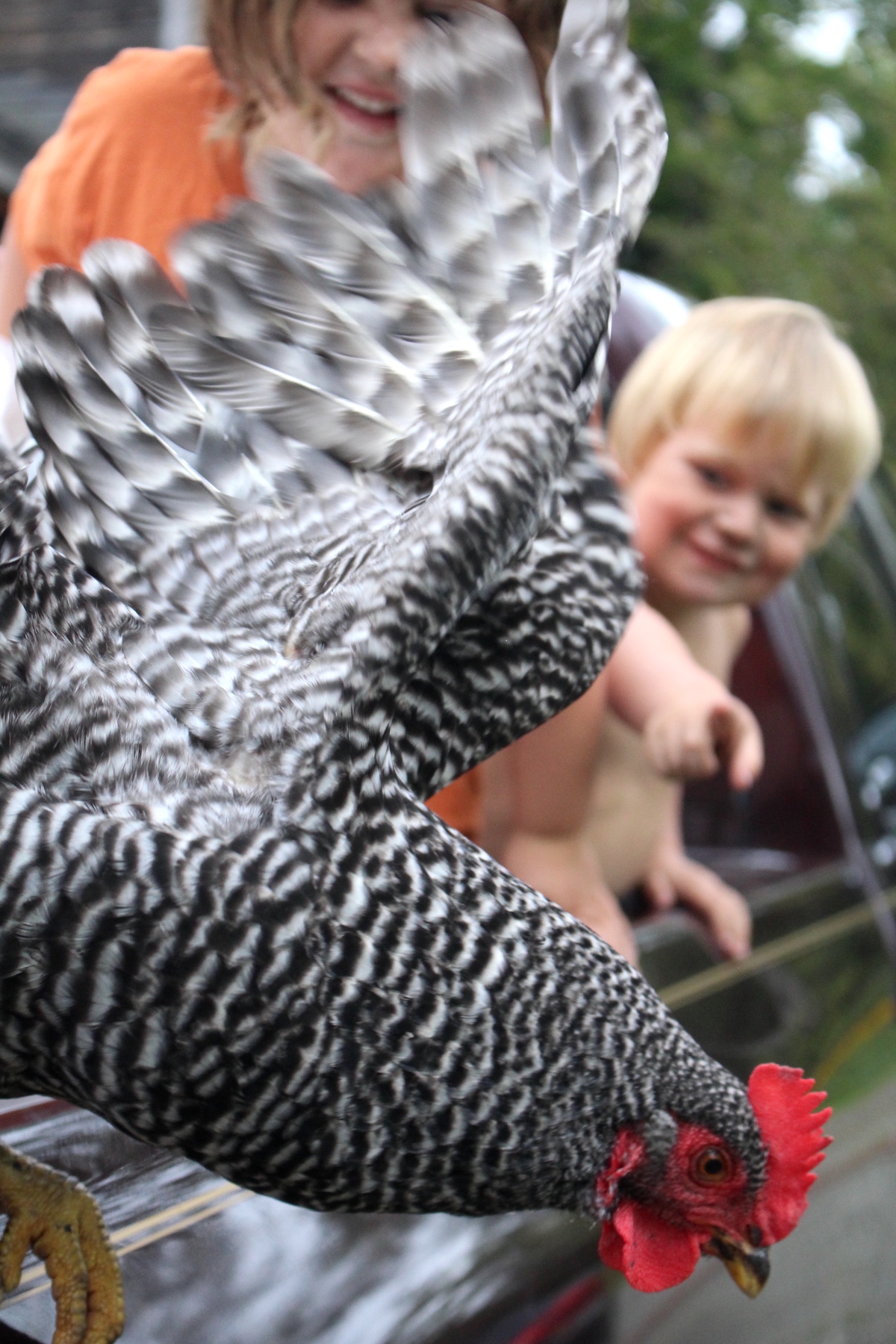
Croad Langshan
Originating from China, this breed is thought to be one of the oldest in existence. Croad Langshan hens, which weigh about 7.5 pounds, will produce 4 large eggs per week or roughly 200 per year.
Technically, these chickens are known for their brown eggs, but you’ll probably notice that some of them will have a pretty pink bloom. Keep an eye on their feathered legs, which have a tendency to become scaly and develop mites if they get wet and dirty.
Croad Langshans are a hardy breed, but will need proper shelter during the summer and winter if temperatures are extreme.
Light Sussex
Another ancient breed, Light Sussex chickens have been around since Rome invaded what is now known as England.
These friendly and white chicken have ribbons of black their tails and wingtips, with hens weighing around 7 pounds. Light Sussex hens are great egg layers, and you can expect 4 to 5 eggs per week or 220 to 240 large brown or pink eggs per year. In addition to their regular feed, these birds are active foragers and are even known to catch mice.
Light Sussex chickens are hardy birds, even in very low temperatures, but will need protection from extreme heat during the summer months.
Salmon Faverolle
Salmon Faverolles originates from the French commune of Faverolles which is located in northern France. Salmon Faverolle hens are medium-sized, weighing roughly 6.5 pounds.
These pink eggers have light honey to light brown feathering, which gives their coat a soft salmon color. This friendly, docile breed is known for producing pink eggs, laying 3 to 4 eggs per week or 180 to 200 per year.
When allowed to roam free range, Salmon Faverolles are excellent foragers and will lay eggs over the winter. As long as they stay dry, this breed is cold-hardy, although not as tolerant of heat if no shelter is provided.
Buff Orpington
Originally bred in England for both their egg-laying capabilities and use as a table bird, Buff Orpington hens will, for the most part, lay around 3 to 5 large pinkish brown eggs per week or 200 to 280 per year (historical records show that these birds used to lay as many as 340 eggs over the course of a year!)
Once close to extinction, concentrated efforts on behalf of breeders led to these birds making a resurgence in 2016. This breed is well-known for its friendly, gentle demeanor—they make excellent mothers and are quite broody.
Buff Orpington chickens are cold hardy, but need lots of shade and water when temperatures high.
Silkie
Silkie chickens are covered with a downy-soft plumage of fluffy feathers, all the way down to their feet and over their toes. Their eggs range in color from creamy white to tinted brown that can look a bit pink, and they lay approximately 3 to 4 eggs per week (which means they aren’t ideal for egg laying).
Because of their feathers, which don’t hold together, when a Silkie chicken gets wet it must be carefully towel-fried or blow-dried. Silkie hens will do well over the winter, as long as they stay dry, and don’t require very much hands-on care.
Overall, Silkie chickens make better pets than they do reliable egg layers.
Serama
A tiny chicken (in fact, the smallest one in the world), these expensive and proud-looking birds range in height from under six inches to less than ten inches tall. Serama hens will lay about 4 eggs per week (or 180 to 200 per year), and are broody hens who make good mothers if the eggs are allowed to hatch.
Serema chickens are exceptionally friendly, good foragers, and will thrive in both hot and cold temperatures. They don’t, however, like wet and muddy environments.
Chickens That Lay White Eggs
In a world of colored eggs, both in the backyard coop and with brown eggs at the grocery store, sometimes the best way to brighten up your egg basket is to add a few bright white eggs in for contrast. Luckily there are lots of options to choose from when it comes to breeds that lay white eggs!
Many of the White Eggers are well-known for being incredibly prolific in terms of their coloring, disposition, and even resistance to disease, in addition to being dependable layers with hardy dispositions in both high and low temperatures.
Polish
This flamboyant white egger—particularly the roosters—has quite a crown of feathers on its head, giving them a striking appearance that was especially loved by French aristocracy in the 1700s (rumor has it, the unseated King of Poland fled to France with his Polish chickens in tow in 1736).
Polish chickens aren’t only for show, these birds are also fairly good layers. You can expect 3 to 4 medium-sized, white eggs per week, or 200 per year.
These docile chickens aren’t known for being broody and do well in confinement—in fact, a clean coop is preferred since Polish chickens are curious birds, and can find themselves in unsafe situations if left to roam freely. Because of their dramatic feathering, which is prone to freezing, they should be kept dry and away from cold conditions.
Black Minorca
Hailing from Minorca, Spain, the Black Minorca breed might lay fewer eggs than other breeds (usually around 120 white eggs per year), but what they lack in quantity they make up for with the colossal size of their eggs, which are thought to be the largest out of any standard breed.
Because they come from a warmer climate, Black Minorca chickens tend to fare better in warmer temperatures, this is definitely not a cold-hardy bird. Over the winter, they’ll need protective shelter to prevent frostbite.
Black Minorca chickens are great foragers and love to roam around the yard free range. If you’re a baker or home chef and are always on the lookout for giant eggs in your egg basket, you won’t want to miss out on this breed!
White Leghorns
First bred in the Mediterranean (Tuscany, Italy to be exact), White Leghorns are expert egg layers, producing 5 to 6 large or extra large white eggs per week, or 280 to 320 eggs per year.
These birds aren’t known for being overly friendly and therefore aren’t the best choice for children, but socialization can be trained into them over time.
True to their name, White Leghorns have white feathers with a rose red comb and red wattles. Since these hens have been bred to lay eggs, they aren’t broody, but they are excellent foragers and good flyers.
White Leghorns are a good choice for farmsteads and other locations where sound isn’t an issue, this particular breed is one that’s quite loud. This breed is warm weather-hardy and can tolerate cold conditions if they have coverage.
Ancona
Another breed of white eggers originating from Italy, Ancona chickens are thought to be related to Foghorns. Appearance-wise, these birds have black feathers with white tips at the end in a v-shape.
Anconas are great egg producers, laying 5 or more white eggs per week or up to 280 eggs per year. Known for their intelligence and curiosity, Ancona hens are active foragers and like to have space to roam free.
They’re considered fairly cold hardy and will do well in warmer temperatures. Because of their social nature, it’s important to have three or more Ancona hens to prevent boredom.
Holland
Holland chickens are kept for their ability to lay eggs as well as for their meat, making them a great dual-purpose bird. This breed was originally developed in the US and got its name from the Dutch chicken breeds it was first bred from.
Holland hens lay medium- to large-sized white eggs, averaging 3 to 4 per week or 200 to 240 per year. There are two types of Holland chickens: White and Barred, both of which lay white eggs.
This is a medium-sized bird, with most hens weighing in at around 6.5 pounds. Holland chickens are known for being adaptive to their environment as well as being docile, cheerful, and gentle. The hens are broody and love to forage and have space to roam free range.
The Holland breed is fairly hardy in both hot and cold conditions, but should be protected against frostbite during the winter months.
Egyptian Fayoumi
With a history beginning in ancient Egypt during the days of the Pharaohs, the Egyptian Fayoumi breed has quite an origin story. Up until recently this small breed was relatively unknown in the United States, but their reputation as decent egg layers and for being highly resistant to disease has contributed to their growing popularity.
Hens will lay approximately 150 small white eggs per year, which look very sweet in an egg basket filled with larger eggs. Egyptian Fayoumi chickens have shiny black eyes which have evolved to be hyper-aware of predators as well as potential foraged food sources.
This striking breed will thrive when left to free range, love to roost in trees if given the opportunity, and aren’t particularly friendly towards humans.
California White
A perfect backyard breed, California White chickens are similar in appearance to White Leghorns, with the main difference being that these birds have small black polka dots decorating their otherwise white plumage.
A medium-sized breed, California White hens are excellent layers and will lay about 5 jumbo-sized white eggs per week or up to 300 per year. You’ll find that the eggs are so large they could easily be misidentified as duck eggs! This type of chicken has a good reputation for being a low maintenance breed, and is known for its friendliness and relatively quiet nature.
Another boon for the California White breed? While it enjoys roaming free, it also is compatible with small spaces and is fairly temperature hardy during the summer and when temperatures drop over the winter.
Chicken Guides
Looking for more guides to help you with your backyard flock?
- How Much Does it Cost to Raise Chickens?
- Easy Homemade Pickled Eggs
- Duck Eggs vrs. Chicken Eggs: What’s the Difference?
- Storing Eggs in Limewater (Keeps 12+ Months!)
- 30+ Ways to Preserve Eggs
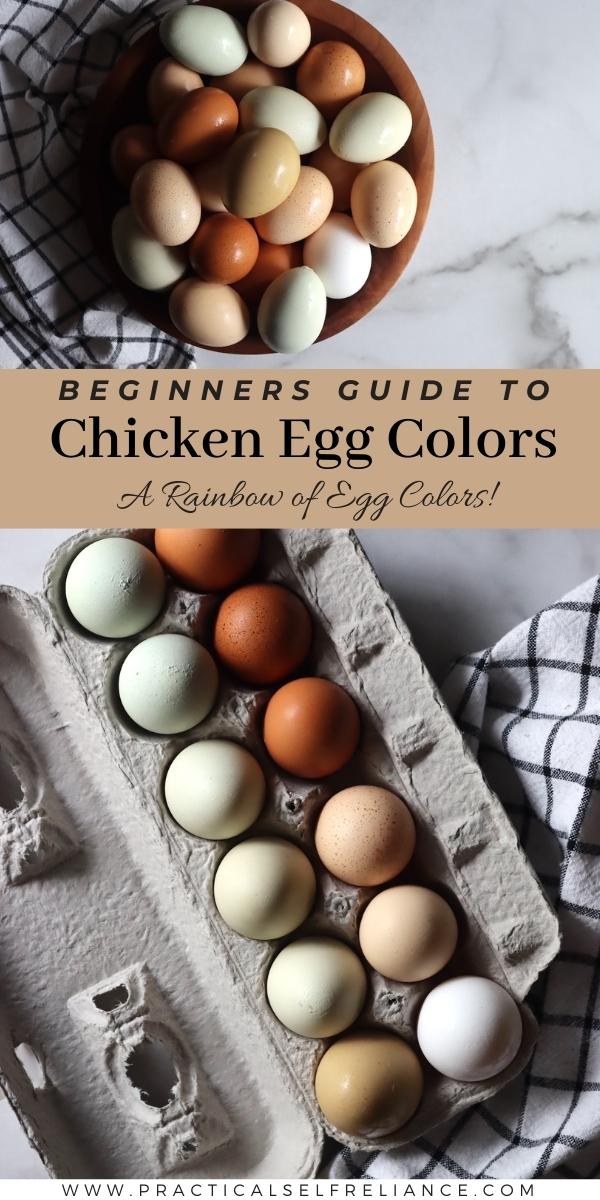
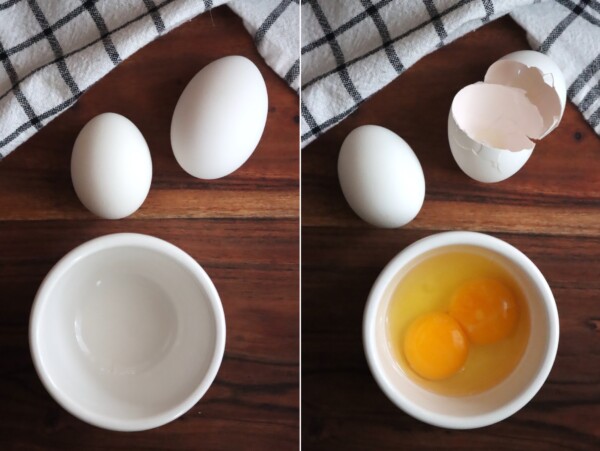
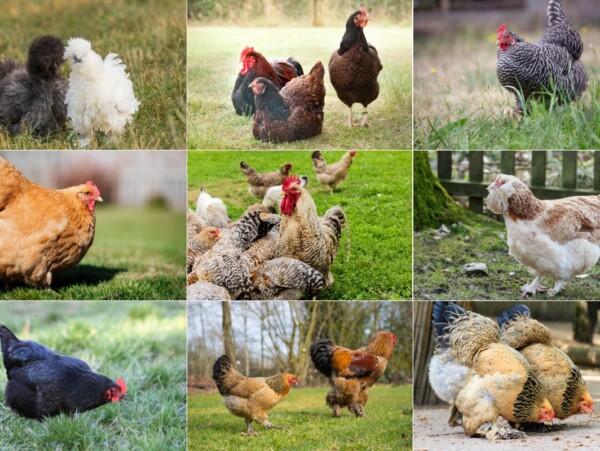
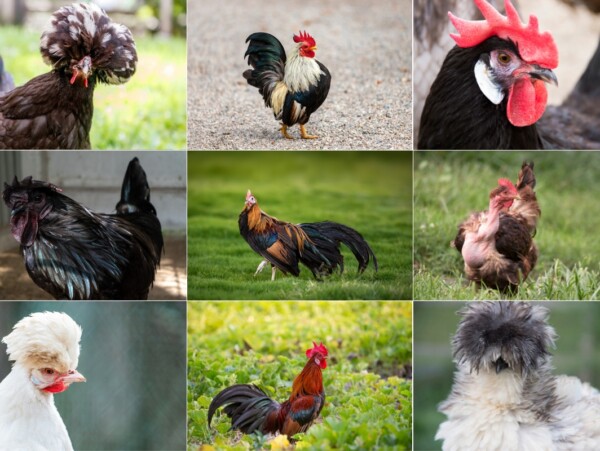
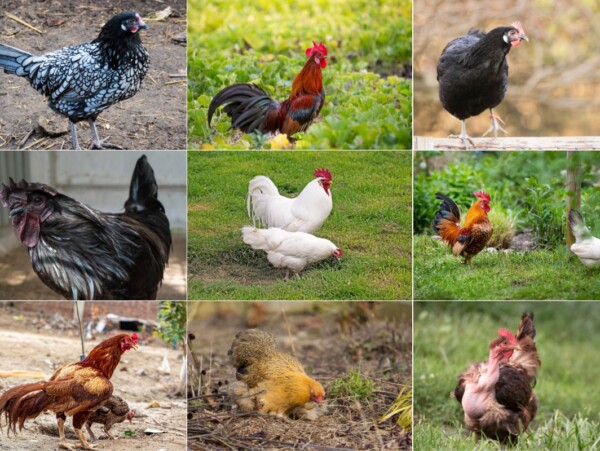










This is very imformative! what would you say is best color eggs laying chickens(blue, green or chocolate brown) for beginners?
This guide has some good choices for you: https://practicalselfreliance.com/best-egg-laying-chickens/
Ashley,
As a fellow “foodie”, let me tell you that I love your work. I found your articles to be feet insightful and full of useful information.
I’m implementing your recipe/guidelines to salt curing eggs and I learned via your article that there’s so many ways to prepare these that will level-up any dish. Never imagined that egg yolks were so versatile…
I will be experimenting with egg yolks in the upcoming weeks and let you know my experience.
Looking forward to learning more about your expertise in the culinary world.
Keep up the great work and thanks for the insight!!
Best,
Estanislao Molina
Thank you so much for your kind words. We’re so glad you’re enjoying the blog.